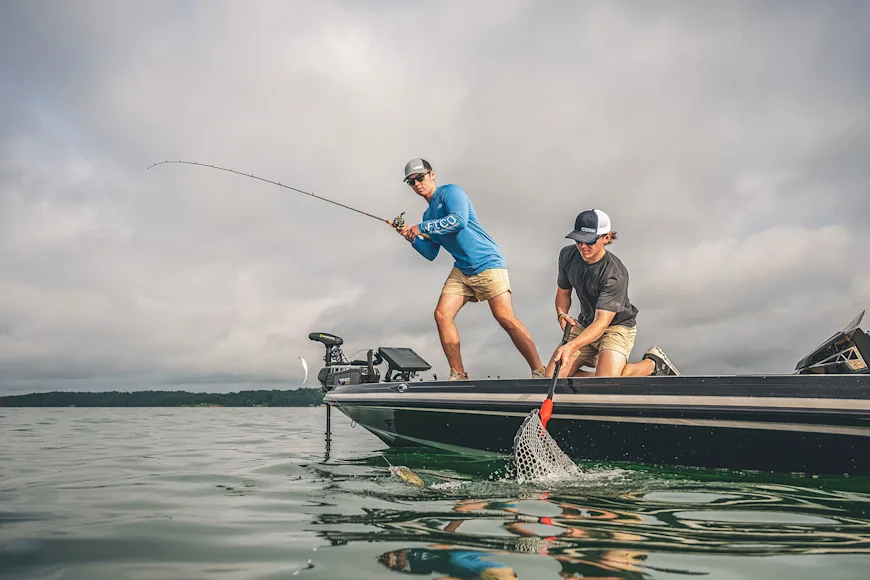In a press release issued this morning, the Bass Anglers Sportsman Society (B.A.S.S.) announced new equipment standards that will curtail the use of emerging technologies in the world of professional bass fishing. Among other changes, the new B.A.S.S. rules will limit the amount of live sonar devices allowed on bass boats and reduce the amount of on-board display screens.
“The use of live sonar at the Elite level has sparked tremendous debate,” said B.A.S.S. CEO Chase Anderson. “Our technology committee spent a tremendous amount of time reviewing post-event surveys, comparing equipment on Elite boats to success rates and considering both fan engagement and bass community feedback related to the use of new technology."
The B.A.S.S. announcement comes just a few days after the National Professional Fishing League (NPFL) banned live sonar altogether (more on that here). Live sonar—also known as forward-facing sonar or livescope technology—lets anglers use display screens to target specific fish in real time.
In contrast to NPFL's all-out ban on the sometimes controversial tech, the new B.A.S.S. rules will limit each boat to "one live sonar transducer [which] must be mounted to the trolling motor at the bow of the boat." In the past, anglers in both Elite Series events and the Bassmasters Classic were given free rein on live sonar with "an unlimited number of live transducers mounted on their boats in any location," B.A.S.S. states.
The second major change concerns the amount and size of fishing-finding display screens that anglers can employ during tournament fishing. Calling the trend to add more and bigger head units to boats a "safety concern," the organization said it will now limit anglers to 55 inches of on-board screen. According to B.A.S.S., bigger screens create blind spots, impacting the safe piloting of boats."
A third rule outlined in the press release will limit B.A.S.S. anglers to just one electric motor per boat. That change is aimed at stopping a rise in the use of electric motors mounted on shallow water anchors. These sort of trolling motor setups "make the enforcement of current rules (like long-lining and trolling) very difficult," B.A.S.S said.
Lastly, B.A.S.S. officials said they'll be rescheduling the Elite Series—which takes place on lakes across the country from mid-September to late August—to focus on fisheries where forward-facing sonar isn't as useful for finding and catching bass. "While live sonar technology will remain a consistent tool used at the very highest level of competitive bass fishing," the release reads, "experience and a deep-seeded understanding of fish behavior, movement and patterns will also be needed for success moving forward on the fisheries scheduled."
Read Next: Competitive Bass Fishing League Bans Forward-Facing Sonar
"B.A.S.S. is, and always has been, the keeper of the culture of our sport," Anderson said. "We believe these new standards will ensure that both the present and future competitive landscape of the Elite Series will remain above reproach." The new rules will go into effect at the start of the 2025 Elite Series season.


